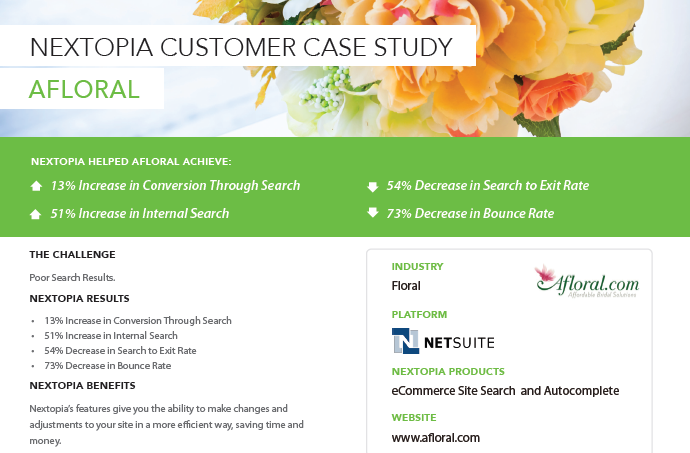Did you know that humans spend half of their waking time daydreaming? Our brains wander by nature, jumping from one thought to the next. If there’s nothing important for our minds to focus on, whether it be a conversation with a friend or the latest episode of Game of Thrones, they simply slip back into their daydreaming state. The question then becomes this: what’s the best way to capture a wandering mind?
Simple, by telling stories.
Marketing is all about sharing your product or service to customers, and storytelling is a great way to accomplish this. Enter in the case study, an in-depth analysis that tells a story about a customer and your company. In fact, 92% of customers prefer that media message sound like a story. Nobody wants to be sold to, but a convincing story helps consumers understand a particular problem and feel the rush of relief when everyone lives happily ever after. Keep on reading to learn how you can use a case study to market your business.
What are Case Studies?
If you visit any business website, you’ll likely see a few testimonials either on the homepage or on a dedicated section of the site. These quoted couple sentences show site visitors (a.k.a. potential customers) how others were satisfied with their experience. Though a business wouldn’t post negative testimonials on their site, it’s assumed those posted are honest and reflect what new customers should expect.
Think of the case study as an expansion of the testimonial. You can expand on a customer’s problem and explain how your business provided a solution. This gives readers a “sneak-peak” into what they would expect should they choose to buy your product or service. Despite the name, the case study is a pretty straightforward concept that yields many benefits for your business.
Why Use Case Studies?
Storytelling as Content Marketing.
If you’re publishing blog posts, creating infographics or sharing videos, you’re already using content marketing. Unlike more sales-oriented strategies, content marketing is a great way to educate existing and future customers about your industry in relevant ways. While eBooks and guides are useful long-form content marketing types, case studies are unique in the way they combine storytelling with providing information relevant to your business.
Let’s say you run a software company that helps teachers manage their rosters and lesson plans. Perhaps you worked with an elementary school that had yet to embrace technology in the classroom. After a set of teachers and administrators gave your product a try, they fell in love with the convenience and ease of use! Now the school is implementing your software school-wide and is convinced that the right technology can bring several benefits to the classroom.
The above example serves as a great subject for a case study. Readers can relate to a real-world client (the school) that was skeptical about embracing technology in the classroom. The teachers involved in the set can provide quotes so readers could understand the benefits of your product. The story concludes with the school implementing your product and provides a happy ending for your readers. People who read this case study can understand how you addressed a problem for a customer.
Tool for Publicity
While you can always publish a case study on your business website, a well-written case study can give your business exposure on other outlets as well. You can submit to a local newspaper or magazine if you’re looking to attract customers in your area. Online sites dedicated to your industry is another option to build your reputation. Industry-specific LinkedIn groups are perfect for sharing your experience for others to learn from. The site’s platform, LinkedIn Pulse, allows users to self-publish articles that can then be shared. You can also repurpose your case study into a slide presentation for Slideshare or into an infographic to share on your social media accounts.
Don’t forget that you can always use your case studies as informational material to send to prospective clients, especially if they are similar to the subject client. The in-depth look at your business does part of the selling for you!
Components of a case study
Every story has a beginning, middle and end. The case study also needs to follow a narrative that people can follow while also learning about the value your business provides. Since case studies are longer and more in-depth, proper planning is key. When drafting your case study, the following components need to be included:
- Title: Stick with short or catchy titles. You can also state the client’s achievements right off the bat. The Geotab case study titled “Anti-Idling Program Slashes Fleet’s Fuel Costs” is a short title that tell us what to expect when we read on. The DataXu case study titled “Programmatic Approach to Media Drives 20% Lift in Outcomes,” tells us how the company helped automaker Ford.
- Summary/Overview: This should give a brief overview of the client’s problem and show how your business provided the solution. Nextopia starts off one case study by simply highlighting how the company helped its client Afloral (“13% Increase in Conversion Through Search”). Unified concludes an overview by hinting at how it helped an Auto Brand understand how many Facebook ad exposures were too many (“The Auto Brand was able to conduct an extensive study to uncover the magic number”).
- Problem: An in-depth look at the problem the client faced. What was wrong? What had they tried before? In the case study “Deep Sea Treasure: Dive Rite Discovers Content Marketing Opportunities” we learn that a diving equipment company was losing market share due to online sales (“Dive Rite’s once-maverick brand was seen as ‘just another technical dive gear brand’”). In “The Tale of Nervous Nate: A Case Study for Business Owners,” we learn that Nate is concerned about his financial security for when he eventually sells his business.
- Solution: An explanation of how your business addressed the client’s problems. What separates your product or service from the rest? The Drive Rite case study provides a “Process Overview” that outlines the 7 steps taken for the shop to take back their once robust market share. Magento describes in detail the updated features to the site of their client BookPal.
- Results: Concrete evidence that shows how your product or service helped the client. Think of this as a “before and after” – how is the client better off? Metrics are important here to quantify your contribution. Dive Rite’s content strategy increased site traffic by 65% without increasing advertising spending. Nate learned how he could accumulate $5 million of net worth outside his small business. BookPal’s order volume increased 211% in less than 3 years.
- Call to Action: You should include a couple of sentences following the case study that relates back to your product or service. The Nervous Nate case study was written by the CEO of the succession planning service NAVIX Consultants. The final paragraph encourages business advisors to contact them and learn more about their specialty. Nextopia concludes by highlighting additional services that can benefit clients (“Improving site performance and metrics isn’t the only benefit to implementing Nextopia…”).
The examples above also show the different styles available when creating your own case study. The Nervous Nate study was published on LinkedIn Pulse and reads more like a blog post. On the other hand, the Dive Rite study was put together by the Content Marketing Institute and features a more professional design. What’s important to remember is that all these studies create a story around the problem to be resolved by the end.
Choosing your subject client.
Remember that the purpose of the case study is to tell a story of how your business solved a problem for a customer. Therefore, you should choose the subject client carefully. While the ideal candidate varies for every business, some factors to consider include:
- The client represents the target audience or has the target problem you’re after or looking to resolve. This helps potential customers relate to the story that’s told in the case study.
- The client is an established customer and has experienced the breadth of your services. This shows potential customers that you’re dedicated to establishing long-term relationships.
- The client left a competitor for your business. This establishes your reputation as a leader in your industry.
- The client is a well-known company that others would recognize. This establishes credibility (“If client X is working with this business, they must be good!”).
Let’s say you run a party supplies company that works with caterers and restaurants. Your ideal candidate could be a restaurant that has worked with you for several years and knows your products inside and out. Perhaps a caterer came to you at the last minute. In both examples, the resulting case study would show your target audience (businesses within food services) how you addressed the needs of a business within that audience.
Working with your subject.
After you’ve identified the client to be the topic of your case study, it’s time to discuss with them the content of the piece. Though you have room to get creative and shape the case study, remember that it’s a collaborative effort with the client. Make sure the client is comfortable discussing what you want to cover. Respect that some customers might not want to reveal the details of their business, and be prepared to accommodate accordingly. Once a draft of the case study is complete, have the client review it for feedback and suggestions.
Best practices for publishing and sharing your case study.
Have a case study that’s ready to be shared with the world? As with any other marketing tactic, there are best practices when displaying and promoting case studies. These include:
Presentation of material.
Like any other piece of marketing material, you need to make sure a case study gets its message across in a succinct and memorable way. Include numbers and metrics that demonstrate how your product or service helped the customer. The elementary school case study, for example, might include that the software product reduced time spent on writing lesson plans by 20%.
Ensure the copy itself is easy to read and follow. Short, simple sentences are best. If appropriate, include bulleted points and lists. Bold and italics are great for emphasizing important points. Use quote blocks to separate important comments from the rest of the case study.
Most importantly, you need to ensure the case study is well written. If you have a dedicated marketing team member that already writes content, you’re all set. If not, you can always reach out to a freelance writer or journalist to write the content for you. Professional writers aren’t cheap, but they have the chops to create a compelling story that shows off your business and helps attract new customers.
Supplement with Photos and Videos
Though the story of the case study should speak for itself, you should break up your content with images and videos. The party supply company could use photos of the caterer using their products at an event. Maybe the software company could include a video clip of a teacher talking about the benefits of their product. Don’t forget that these also can serve as featured content when sharing through social media!
Website Placement.
Since the case study can be a powerful tool to show off your business, you can publish them on your home page. This gives visitors the opportunity to immediately understand your business in a relatable way. If you’re planning on publishing case studies on a regular basis, it’s a good idea to have a dedicated page to house them. This allows visitors to easily search through past studies without having to sift through your blog and other published content.
Conclusion
Case studies are unique in their ability to combine storytelling with informational content about your business. Potential customers get an in-depth look at what it’s like working with your product or service, thus reducing uncertainty. Let’s consider the following:
- Google Analytics helped PBS increase conversions and visits by 30%.
- Twitter advertising tools helped wholesale distributor Ferguson Bath, Kitchen & Lighting Gallery increase their following by 3000% and engagement by 104%.
- Amazon Web Services helped Slack achieve a multibillion-dollar valuation.
Even though these are large tech companies, case studies help prove their value to potential customers and beyond. Potential clients can relate to issues with marketing and IT systems while the companies are showing a solution while still promoting their offerings. After all, if your company helped someone achieve success, wouldn’t you want to show off, too?
Remember all humans daydream, including your potential customers. It’s up to you to grab their attention and not let go. What challenges do your clients face? What solutions do you provide? Now that you know the basics of creating a case study, it’s time to tell a story of your own.





